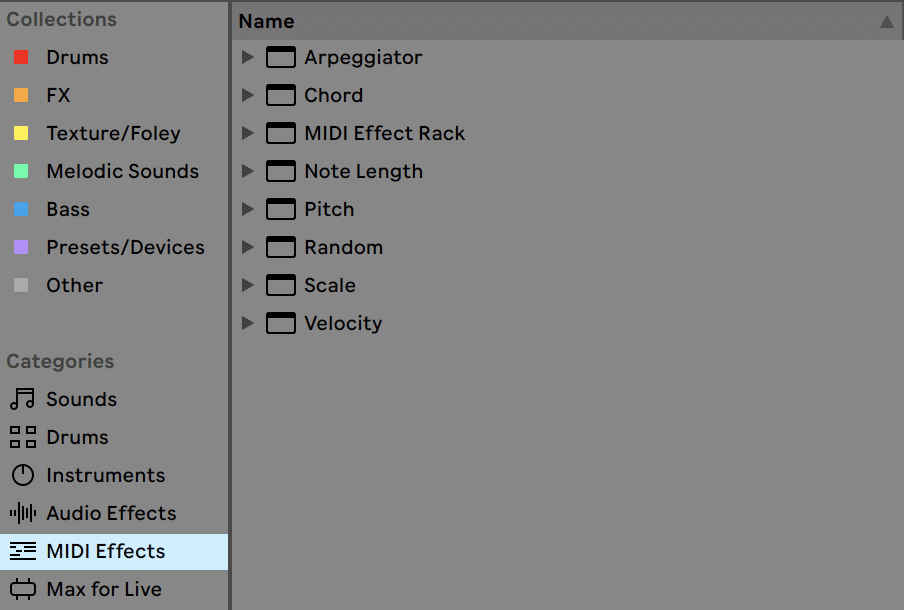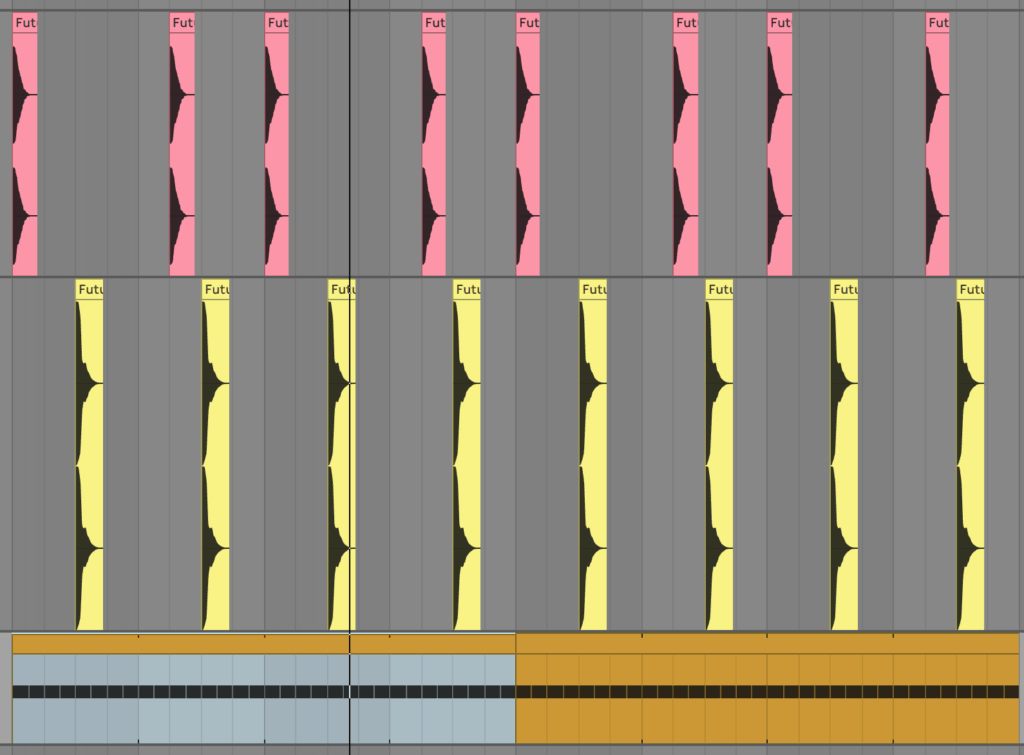I think creative block, writer’s block, whatever you want to call it – is nonsense.
I truly believe that.
Professionals don’t give it a second thought, it’s their job. Why should it be any different for you? If you’re passionate about making music, then act like it.
That’s easier said than done, of course, which is why I’ve put together 15 ways that you can crush creative block and get ideas down.
These tips range from songwriting, to production, and everything in between.
Not all of these will work for everyone, which is why there are 15 of them. Take your pick.
New electronic music producer? Grab our free EDM starter kit – packed with samples, presets, and our best PDF guides to get you started on your musical journey.
1. Focus on rhythm first
A good melody relies on a good rhythm, as does a good song. Starting with rhythm is generally a lot easier than composing the actual contour of the melody (how it progresses on a vertical scale).
Once your rhythm is down, it’s simply a matter of moving notes up and down to create your melody.
On a more macro level, and especially if you’re making dance music, getting the groove and rhythm sorted in your track first makes everything else come easier.
2. Learn how to craft a good melody
There’s a lot more to writing a melody than just rhythm. While you can come up with a decent melody with no knowledge of how to do so (trial and error), it’s a lot quicker and easier to know a few things.
I’ve written a post on this, so if you’re wanting to learn a few things about melodies and how to write them (catchy ones in particular), then read it before moving on.
3. Get visually inspired
I’ve always thought there’s a strong link between visuals and audio. This is especially true when it comes to inspiration. I like to browse through photos of nature, beaches, city landscapes, and so on.

Why not do the same? Download some wallpapers and try to come up with ideas based on them. Write a musical story around what you’re seeing.
4. Edit MIDI files and make them your own
Not only are MIDI files great to learn from, they’re also a great form of inspiration for original ideas.
Download MIDI files for your favorite songs and pick elements from them.
You might like the rhythm of a chord progression from one song, and a particular chord in another. Edit them so that they don’t sound close to the original, and then call it your own.
This isn’t stealing, so don’t feel guilty.
5. Use MIDI effects
Whenever I’m struggling to come up with a good idea, I’ll chuck in Ableton’s Scale device with a preset and continue to jam around on my keyboard.

Improvising within different scales can lead to unique ideas that you wouldn’t usually come across. Experiment with other MIDI effects like chord devices and arpeggiators.
6. Create a melody over an existing chord progression
Take a chord progression that you like from any given song and browse for its respective MIDI file. Drag it into your DAW and write a melody on top of it.
Once you’ve come up with an original melody, you can either modify the underlying chord progression so your composition is unique or remove the chord progression completely and write a new one underneath.
Note: You can also do this the other way around by taking an existing melody and writing a chord progression underneath it.
7. Start with the drums
Programming drums is fun and generally easy. If you find yourself stuck for ideas, try putting down some basic rhythms and loops.

What you’ll often find is that a certain percussion sound or loop leads to an original idea that becomes the basis of your track.
For example, you chuck in a floor tom sample and immediately recognize that you need a particular bass rhythm to interact with it. Or, you use a tuned percussion sample which leads you to working in a specific key.
Note: It’s easy to get “stuck in the loop” when starting with drums, so make sure you keep arrangement in mind as the next objective.
8. Listen to other genres of music
I wish I didn’t have to include this tip, but too many producers don’t recognize how helpful it is.
It’s simple. If you’re a producer or musician, you should be listening to other styles of music–even music you don’t necessarily like.
You might listen to classical music and come across a melodic motif that you can adapt and use in your current project.
You might listen to jazz and hear a funky drum arrangement that inspires you to include a drum solo in the breakdown of your next project.
Or, you might listen to some laidback, acoustic music and take note of how the chorus has a different chord structure to the verse.
Dance music is encompassing and diverse. Drawing influence from other genres will not only lead to more ideas, but also better ideas.
9. Take a preset-based approach
The preset-based approach is my fallback. It’s the safety net, the last resort for when I’m feeling lazy and uninspired.
Open a synth and scroll through presets while jamming on your MIDI keyboard (or computer keyboard if you don’t own a MIDI keyboard).
This combination of new, unheard sounds and improvisation on the keyboard will almost always lead to a unique idea.
Last time I did this, I ended up with a strange big room/tribal/jungle-ish track at 110BPM. Be prepared to make something different.
Recommended: The Best Paid & Free Serum Preset Packs
10. Learn music theory
Half the struggle with music production is getting ideas from your head into your DAW. The ability to do this, to translate ideas from your head to your DAW, is partly something that comes with time and experience.
The other part is actually knowing how to recreate what’s in your head. If you’re hearing a complex jazz chord progression but you don’t actually know what notes make up each chord, then you’re going to have a hard time writing said chord progression in your DAW.
Knowing music theory allows you to better translate ideas from your mind into reality, and it also expands your ability to come up with great ideas in the first place.
For instance, if you don’t know anything about modulation, you probably aren’t going to think of using it in your song. Likewise, if you don’t know what a deceptive cadence is, you’re only ever going to use it by accident.
11. Produce consistently
Levi and I talked about this the other day in episode 12 of The EDM Prodcast–if you’re not producing consistently and regularly, it’s easy to fall into creative ruts.
By practicing production, even if it’s just 30 minutes a day, you keep your mind primed for new musical ideas.
Yes, that means you’re more likely to come up with ideas in the shower, while you’re taking a leak at work, and, unfortunately, while you’re trying to get to sleep.
12. Don’t take it too seriously
Pressure is the enemy of creativity.
Creativity requires an open mind, time, and freedom to experiment. If you force yourself to make something amazing, or place stress on yourself in any other way, you’re far less likely to generate good ideas. If anything, you’ll just end up frustrated.
Tip: The best way to work around this is to invite someone to collaborate with you, ideally in person. Having someone in the same room makes the creative process even more enjoyable.
13. Switch instruments
Normally start writing harmonies and melodies on a piano? Use a guitar. Typically start with a supersaw sound? Use a pluck.
By using different instruments and sounds to generate ideas, you force yourself into a different mindset, a mindset where you have to adapt.
If you normally write melodies with a supersaw sound and switch to a piano, then you’re likely to work differently.
On a high-level, this can apply to your production environment and workflow as a whole. Try to break routine and change up your workflow.
If you normally start a track by making the drop, why not start at the breakdown instead? Get out of your comfort zone.
14. Revisit old projects
You’re listening to your iTunes library on shuffle mode and one of your old tracks comes on. You never fully finished it, but the ideas are there, and you know it’s got potential.
GO BACK TO IT.
Seriously. If you’ve got unfinished projects that have potential, work on them.
If you’re really struggling, just start with the ones that are almost finished and build momentum.
15. Write around a vocal
One common trick or technique among electronic music producers is to drag an acapella into a project file and write music around it, then remove the acapella afterwards.
This can be helpful for many reasons, one of them being that you already have a basis for harmony and melody. In other words, you’re not starting with the terrifying blank slate.
Conclusion
There’s much more to be said about idea generation and overcoming creative block. It’s one of the reasons I wrote a book about the topic.
So, while this post isn’t comprehensive, I’m confident that if you try these strategies out, you’re going to come up with ideas, and you’re going to overcome creative block (at least to some degree).
But if you are a new producer and need something more comprehensive to help write better music, make sure to sign up below for our free video training.
[author title=”About the Author”]

